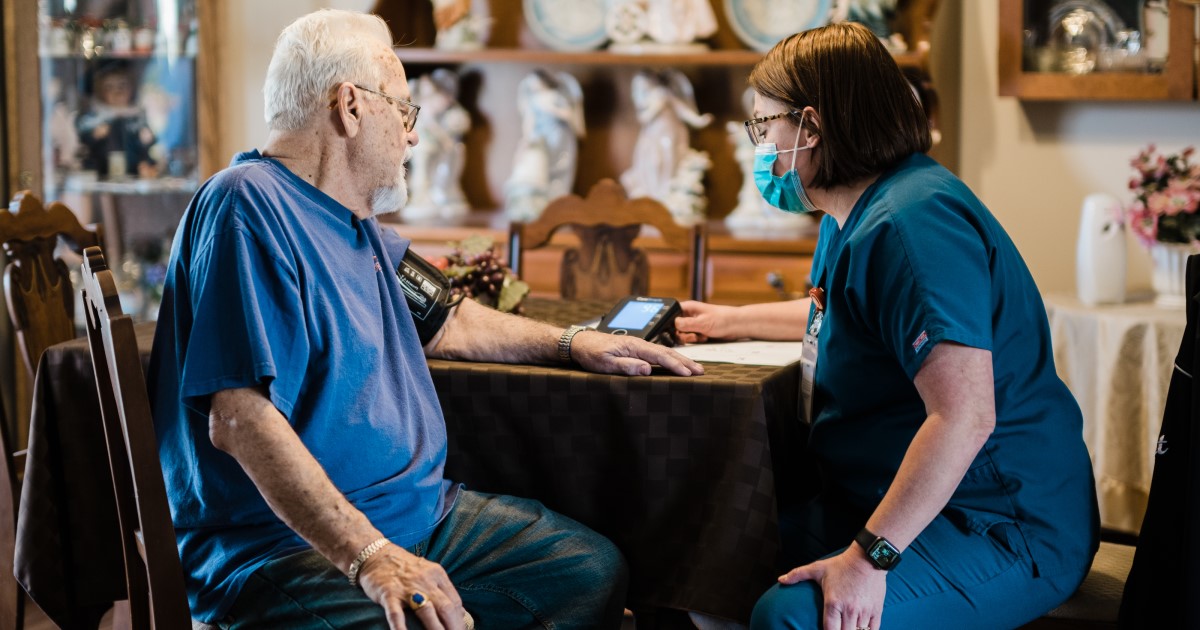
High-quality, patient-centred care requires information, connection, and speed. Shared mobile devices – when paired with the right technologies and strategies – provide all that while also improving operational efficiency and regulatory compliance.
This article explores the benefits of a strong shared mobile device strategy, and the advantages of end-to-end management. Read on to learn key takeaways for healthcare organisations looking to unlock the full potential of their shared mobile program.
Unlocking the full potential of shared mobile devices in healthcare
Shared mobile device programs offer benefits that significantly enhance the overall patient experience. In fact, a robust mobile device strategy can lead to increased productivity, greater return on investment, and superior patient care. Equally important is clinicians benefiting from quick, efficient, and secure mobile workflows, which help them do their jobs while reducing burnout.
By enabling seamless access to patient information and clinical applications, shared mobile devices allow healthcare providers to make informed decisions in real-time, leading to better patient outcomes. Clinicians have the tools they need at the tips of their fingers, which improves patient care while helping combat the loss of healthcare workers to burnout.
Facilitating fast and efficient workflows while improving security and auditability
One of the primary challenges in healthcare is balancing the need for strong cybersecurity with user-friendly access. The security of mobile workflows is crucial for protecting sensitive patient data and guarding against cyberattacks. Meanwhile, clinicians need that security to be seamless and nearly invisible, so they can access life-saving information quickly and efficiently. To achieve this balance, healthcare organisations can implement several strategies:
-
Locking down devices between uses: Ensuring that shared mobile devices are locked down between uses helps maintain privacy, and control access to sensitive data. This prevents unauthorised access and reduces the risk of data breaches.
-
Streamlining authentication: Providing convenient access for authorised users through streamlined authentication processes, such as badge tap, single sign-on, and passcode access, can tighten security without sacrificing usability.
-
Multifactor authentication (MFA): Implementing MFA can offer a user-friendly experience with real-time access, ensuring that only authorised staff can use shared devices.
-
Depersonalising devices after use: Removing user credentials after each use helps control information access during device exchanges, further enhancing security and auditability.
By implementing these measures, healthcare organisations can create workflows that protect patient safety, improve user experience, and ensure compliance with healthcare regulations.
Enabling rapid deployment of corporate-owned devices
Rapid deployment of corporate-owned devices is critical for healthcare organisations looking to leverage the benefits of shared mobile programs. To facilitate this process, organisations can take the following steps:
-
Form a cross-functional team: Creating a team that includes IT and security experts, mobile administration staff, and user champions ensures that all aspects of the deployment are considered and addressed
-
Conduct workflow analysis: Understanding the specific needs and workflows of stakeholders helps align mobile deployment with the organisation's goals. This involves identifying how and where devices will be used to ensure they are deployed effectively.
-
Map secure and efficient workflows: Developing workflows that balance security and usability is crucial. This involves designing processes that are both secure and user-friendly, ensuring that clinicians can access information quickly without risking patient privacy or increasing cyber risk.
-
Establish device maintenance and management strategies: Implementing strategies for device tracking, maintenance, and management ensures that devices are always available and ready to go. This includes setting up proactive alerts for device tracking and regular audits to monitor usage.
-
Choose a trusted technology partner: The right technology partner will help organisations map out secure workflows and establish efficient and secure management strategies. With expert help, shared mobile devices are quickly deployed and organisations maximise technology investments.
Improving device inventory management and loss prevention
Effective device inventory management and loss prevention are critical for ensuring that shared mobile device programs are cost-effective. To this end, healthcare organisations should adopt the following strategies:
-
Robust access management solutions: Implementing advanced access management solutions ensures that only authorised staff can use shared devices, reducing the risk of unauthorised access and data breaches.
-
Regular auditing of device usage: Regularly auditing device usage helps track who has used which devices and when to help identify any misuse or loss.
-
Secure and efficient mobile device management (MDM) solutions: MDM solutions can help organisations quickly locate and secure lost devices, reducing the risk of data breaches.
-
Staff training: Training staff on the importance of device security and proper handling can significantly reduce device loss while helping prevent data breaches.
-
Clear and enforceable policies: Having a clear and enforceable policy for reporting lost or stolen devices ensures that prompt action is taken to mitigate any potential risks.
With these strategies, healthcare organisations can improve device management and loss prevention, ensuring that shared mobile programs are viable and effective.
Healthcare needs quality, shared mobile strategies
When properly executed with the right technology partner, shared mobile device strategies and end-to-end management offer significant benefits for healthcare organisations. Shared mobile – done properly – enables a secure and efficient mobile environment that helps clinicians do their jobs with less frustration while improving patient care and operational efficiency.
_
Check out this whitepaper for insights on how healthcare organisations can facilitate secure and efficient authentication through passwordless systems..


